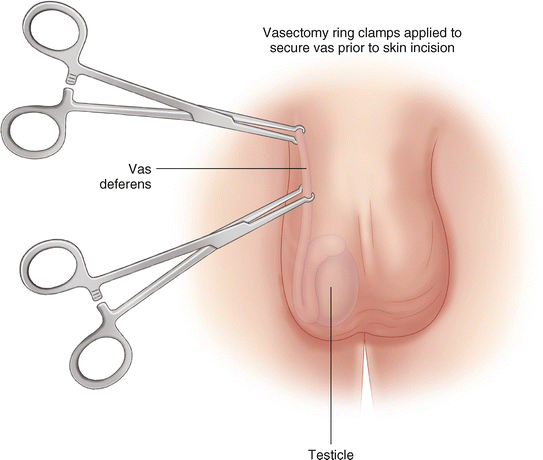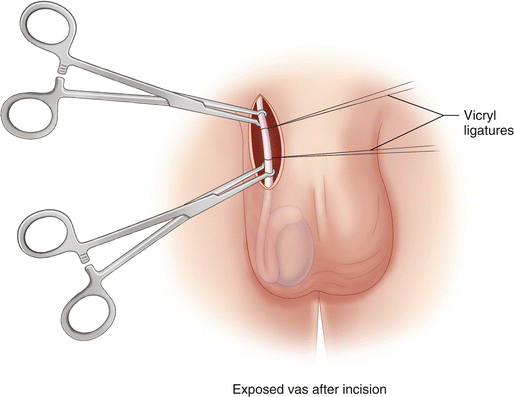Fig. 33.1
Vasectomy clamp
Operative Technique
With the patient in a comfortable reclined or supine position undressed from the waist down. A gauze 4 × 4 will be wrapped loosely around the head of the penis and used to apply traction to the penis cephalad. This gauze will be held in place with a clamp attached to patient’s gown or shirt (Fig. 33.2).


Fig. 33.2
The penis can be retracted with a rolled gauze and a clamp attached to the patient’s shirt to provide better exposure of the scrotum
The scrotum is prepped with hibiclens or betadine and pulled through the hole in a fenestrated sterile drape.
The vas deferens is palpated in the upper one-third of the scrotum on the lateral aspect. The skin over this area is anesthetized with local anesthetic.
Once adequate anesthesia is obtained the vas deferens is held in place with a pair of ring vasectomy clamps, above and below the area to be incised (Fig. 33.3).


Fig. 33.3
The vas is held between the two clamps through the skin before the incision is made
The skin is incised with a 15 blade scalpel between these 2 clamps or the skin can be punctured and spread apart with a sharp mosquito like clamp for a “no scalpel technique.”
Dissection is carried down through the subcutaneous tissue including the dartos muscle layer and the vas is identified by direct visualization.
Two Vicryl sutures are placed around the vas about 2 cm apart. These sutures are used to ligate both ends of the vas. A hemostat is placed on each of the sutures for traction (Fig. 33.4).


Fig. 33.4




This figure shows the vas exposed with the clamps now holding directly onto the vas to allow easy passage of the Vicryl ties around each end for ligation
Stay updated, free articles. Join our Telegram channel

Full access? Get Clinical Tree








